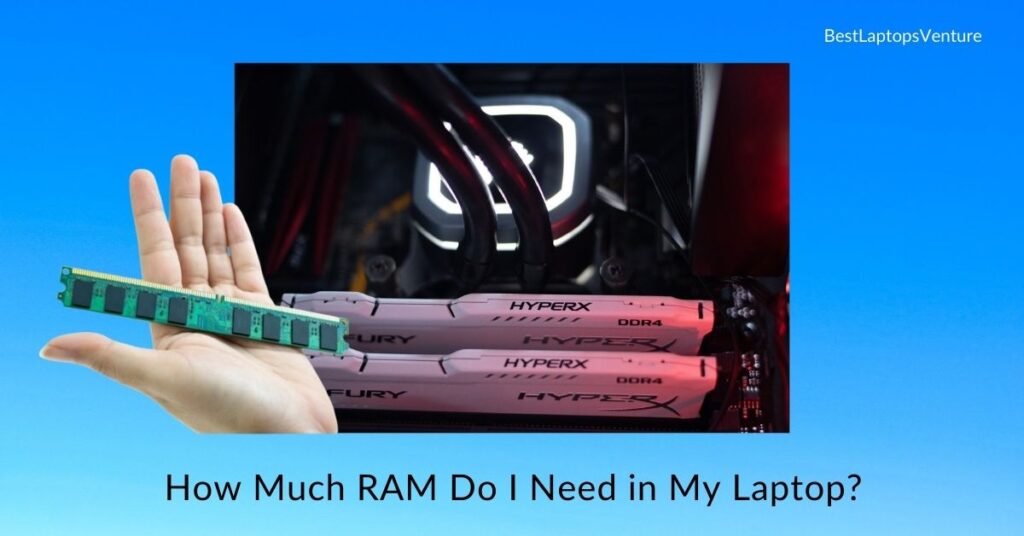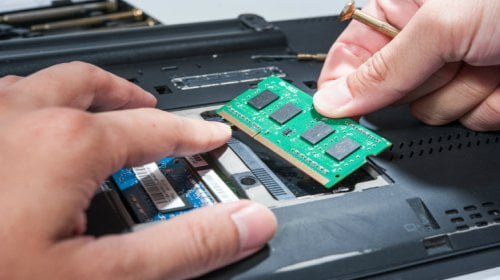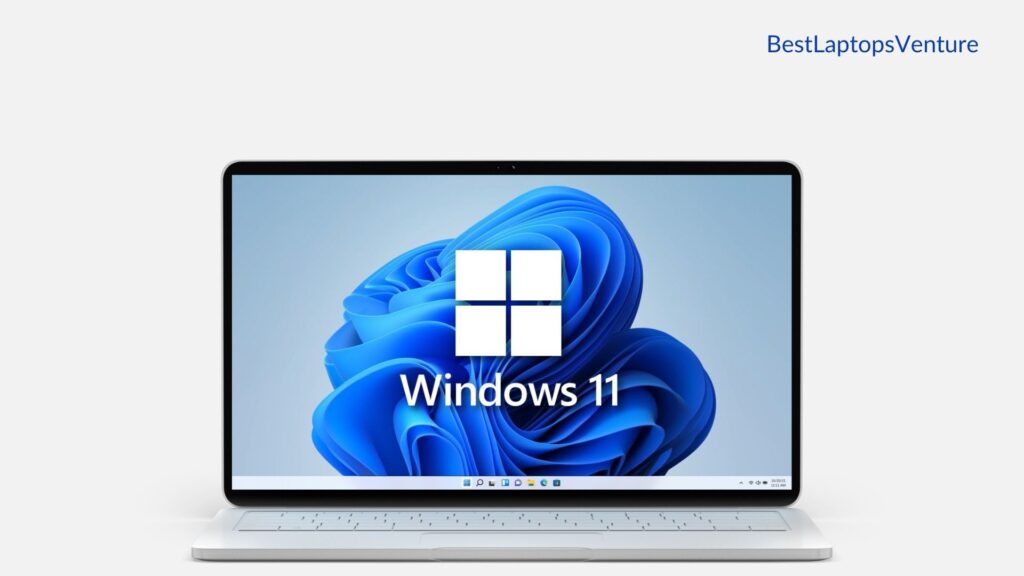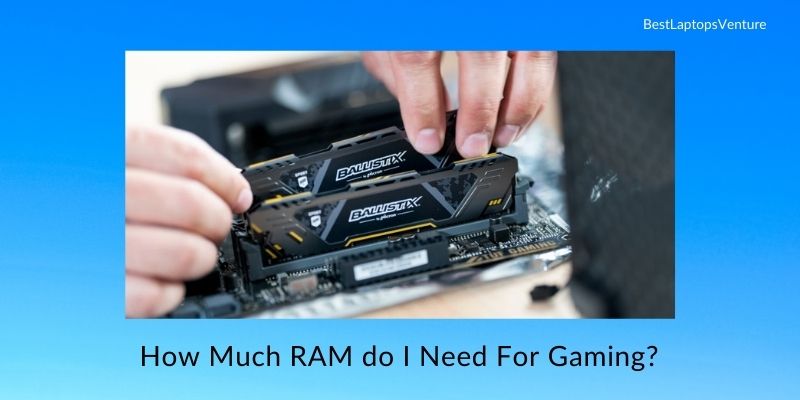
You may be wondering, ‘How much RAM do I need?’ Well, we’ve got the answers for you
Random-access memory, generally reduced to RAM or just “memory,” is one of the most crucial aspects of any computing equipment.
Typical memory sizes for modern PCs, tablets, and smartphones range from 2GB to 32GB, with some devices offering considerably more. It’s hard to say without knowing exactly How Much RAM Do I Need in My Laptop.
Adding more RAM to your computer won’t necessarily help it work quicker, so it’s crucial to acquire a suitable quantity based on your machine and the apps you want to run.
For example, Windows 10 requires roughly 2GB of RAM, but ChromeOS, the operating system found in the finest Chromebooks, only needs about 1 GB.
We’ll show you how much RAM you’ll need for your tablet, laptop, desktop, and gaming rig in this article, so read on! If you want to know how much RAM you need for a smartphone, we have a guide for that, too.
The big picture: How Much RAM Do I Need in My Laptop?
The following are some general rules that should apply to nearly all PCs and Macs:
For those on a tight budget, there are Chromebooks and tablets with as much as 4GB of RAM.
8 GB: This amount of memory is commonly seen in low-cost laptops. This is good for basic Windows gaming at lower settings but soon runs out of steam.
Windows and MacOS computers benefit greatly from 16GB of RAM, which is also an excellent amount for gaming if it is quick.
Professionals will be happy with a storage capacity of 32GB. Some of the more taxing games may see a minor boost in speed.
It’s only for enthusiasts and custom workstations that you’ll want to go over 64GB. Professional engineers, A/V editors, and others of a comparable caliber should begin here and work their way up from there as necessary.
Buying more RAM than you require is a waste of money because it doesn’t improve performance. Buy what you truly need, and spend the leftover funds on more critical components like the CPU or graphics card.
An Introduction to Random Access Memory (RAM)

The long-term storage supplied by a solid-state or mechanical hard disk is sometimes mistaken for memory capacity. Even retailers and manufacturers might make a linguistic blunder from time to time.
Even while RAM is the same in theory, it performs a completely distinct function. Instead of a vast quantity of sluggish storage — as you’d find on a mechanical hard drive — RAM is a small amount of incredibly quick storage.
System memory is used to temporarily store data needed by open applications.
The amount of RAM used by various programs varies (we’ll go through a few of the more heavy ones in a moment), but any application will almost certainly utilize some of your system’s available RAM.
That builds up over time, and if you don’t have enough RAM to go around, the programs you’re utilizing will drastically slow down. However, if your RAM runs low, the software will be unable to utilize the fast storage RAM provides to rapidly retrieve the data it requires.
Additionally, having an excessive amount of RAM is something to be aware of. If, for example, you’re only utilizing 12GB of RAM under the most demanding situations and you have a 16GB kit, switching to a 32GB kit (assuming all other elements are similar) won’t affect your performance whatsoever.
It’s money down the drain.
Because of that, it’s crucial to pick a capacity that slightly surpasses your demands without going crazy. Adding additional RAM isn’t going to hurt your computer’s performance. That, however, is akin to purchasing a house with four bedrooms and only occupying two of them.
Dedicated graphics card memory should not be confused with system RAM. High-end 3D games rely on video RAM, or VRAM, to temporarily store picture data, such as textures. GDDR5, GDDR6, and GDDR6X are the most common memory interfaces in graphics cards nowadays.
System RAM, on the other hand, is designated as DDR3 or DDR4 depending on the version. The newer name DDR5 implies the newest RAM generation, although compatible equipment may not surface in the wild for a while.
We’ll keep you apprised of any changes to DDR5 via this page.
Although DDR6 is being worked on, it is not yet available.
The good news is that most manufacturers do a great job of properly labeling RAM so that customers know exactly what they’re buying.
How much RAM do you actually need?
8GB of RAM should be more than enough for most people’s computing needs on a daily basis. You’ll be able to install Windows, as well as a few productivity tools and a web browser, without any problems.
No performance difficulties should occur if you don’t open too many tabs in your browser or neglect to shut down programs you aren’t using anymore.
If you’re cautious about removing unnecessary programs, you’ll find that 8GB is also plenty of RAM for most game titles (some only require 4GB), as long as you’re not running them at their maximum settings.
8GB of RAM will be rapidly exhausted if you need to use many programs at the same time, such as an email client, a browser, Adobe Acrobat, various Microsoft Office software, and possibly a communication app like Slack.
If you’re a huge multi-tasker, you’ll find that 16GB of RAM will offer you the extra capacity you need to keep all of those apps running efficiently.
It’s rare you’ll find a game that can’t run extremely smoothly with 8GB of RAM, however, you may have to be careful about which other applications are running at the same time. Microsoft Word and Outlook may get along with Crysis 3, but you'll want to avoid websites with a lot of adverts or auto-play videos.
Most individuals won’t need any more than 16GB of storage space on their devices these days anyhow. Keep in mind: RAM is like seats on an airliner. When a 747 flies half-empty between two cities, it’s a waste of money and the plane’s capacity to carry more passengers than a smaller aircraft.
In order to reap the benefits of having more RAM, you must be able to utilize it. Recommended (not minimal) system requirements are your best bet as a gamer. For the best gaming experience, you’ll want to know how much RAM, CPU, and GPU you’ll need.
16 GB of RAM is ideal for folks who want to work on huge papers while concurrently maintaining hundreds of tabs open in their browser, as well as for video and graphics professionals who need to work with large files on a consistent basis.
16 GB of RAM is useful for gamers who want to multitask while playing, but if you want to get the most out of your 16 GB of RAM, you’re better off upgrading your CPU or graphics card. A gaming laptop will provide you with the biggest quantity of alternatives.
Even additional RAM, such as 32 GB or more, may be required for processes that use a lot of resources.
Workstations with this much memory are just unimaginable without it. This is a suitable option for jobs requiring a lot of computational power, such as those found in a business environment.
How much RAM do I need for laptops?

Most laptops come with 8GB of RAM, with top-tier machines having 16GB — even up to 32GB for the most powerful gaming notebooks.
Tablet and laptop demands are merging, as previously indicated, but laptop users are more comfortable running more complicated apps, meaning RAM is more critical in this scenario.
For something like a Chromebook, which mostly relies on cloud-based apps and provides very little storage space, you won’t need much in the way of RAM and will be fine with 8GB of RAM when buying a Chromebook, especially since you can now use the Google Play Store to download Android apps directly on your machine.
For Windows and MacOS, however, you should take 8GB as a starting point and think about boosting that figure up to 16GB. Most of the finest laptops come with 16GB for good reason.
Before you even start an app, Windows 10 uses almost 2GB of RAM. If you are doing a lot of graphic design work or are intending on dabbling in some higher-end gaming, you may want to consider boosting it to 16GB.
You’d only need to get past that if you conduct particular things, like editing enormous video or photo files – the type of stuff you’d ordinarily do on a desktop.
Most people don’t, but if you do, you’ll want to be sure you have enough RAM installed on your laptop.
It’s more difficult to upgrade RAM in a laptop (or, in some current models, impossible) compared to a desktop, so getting what you need at the outset is crucial.
How to pick the right RAM
There are many various kinds of RAM on the market, and only the sort that’s required for your laptop will function, so be extremely careful while purchasing.
It’s not just about determining the quantity of RAM you need, it’s also about matching up numerous crucial specs, such as:
Type: SRAM, DRAM, and SDRAM are the three basic forms of RAM
Data rate: Currently there are five types of data rates — SDR, DDR, DDR2, DDR3, and DDR4
Speed: Usually given after the data rate e.g. DDR3-800, RAM speed specifies how fast it’s possible to be accessed by the CPU
Type of memory module size: Memory modules for desktops and laptops might be varied in physical size. Laptops often utilize SO-DIMM (Single Outline Dual Inline Memory Module) instead of DIMM on desktops (Small Outline Dual Inline Memory Module).
There can also be changes in the number of pins (the small connectors on the bottom of the RAM) (the tiny contacts on the bottom of the RAM)
Avoid guesswork if you’re unsure which module is best for your PC. You can find out for sure by contacting the manufacturer.
The support page for your particular model will generally contain the exact requirements you need. Failing that, take your laptop to your local shop where one of their staff can help you make the proper option.
How much RAM do I have installed?

If you don’t know how much memory your PC has, it’s not hard to find out. You can learn how much RAM your PC has by checking the model or serial number online.
Alternatively, you can dive into your system for the relevant information. Here’s a brief rundown on how to find out:
- Go to your starting menu.
- Click “System Settings.”
- Perform a RAM search.
- Select “View RAM info.”
After this step, you will be provided with a page that gives you your PC’s RAM space, how much is presently being utilized, and how much is available. Also, here is the place to go if you have any queries concerning your CPU.
What types of RAM are compatible with my laptop?
Your laptop’s motherboard controls how much RAM it can accommodate. What some people don’t know is that RAM is a physical computer element, not a kind of code or software, hence it requires its own container.
The motherboard stores all of the most crucial components of your PC, including the CPU, RAM, hard drive, and more.
RAM comes fashioned in physical strips. Each strip has a defined amount of memory storage capacity ranging from 2GB to 32 GB.
RAM slots are often number two or three on laptop motherboards. If your laptop has 8GB of RAM, it typically uses two 4GB strips of RAM in different slots. Because of the way memory fits into your laptop or computer, it’s really pretty straightforward to remove and increase.
One of the most frequent ways to update your RAM is to replace your 4GB strips with 8GB strips, giving you a total of 16GB.
Do you need 16GB of memory?
Probably not, but it’s a reasonably affordable improvement and you’ll never have to worry about apps malfunctioning or computer crashes as a result.
However, it’s crucial to know that your computer’s motherboard may limit the amount of RAM your machine may upgrade to, so keep that in mind before attempting to do so.
While most modern HP laptops are intended to accommodate 16GB or more RAM, older ones may not be able to accept as much. Before purchasing larger GB strips, do some study on the capabilities of your device.
How much RAM do I need for Windows 10/11?

If your PC has a 64-bit Windows™ 10/11 operating system (OS), at least 4GB of memory is a necessity.
You can easily get by with 4GB as long as you aren’t playing complex games and handling enormous data files. Of course, it wouldn’t hurt to step up to 8GB if you want your computer to work as smoothly as possible.
Keep in mind your background work at hand; a 32-bit Windows™ 10/11 OS will take up 1GB of RAM and a 64-bit OS will consume 2GB at all times.
If your laptop has a 64-bit OS with just 4GB of memory, you’ll lose approximately half of your accessible storage space right off the beginning.
How much RAM is enough?
The only person who understands how much RAM you need is you. Regardless of whether you’re looking to buy a new PC or upgrade your current laptop, you need to think about how you want to use your computer and how much memory space it will require to stay up.
Average users might get by with entry-level RAM, but it might not be enough to get the job done for more demanding apps.
Generally speaking, 8GB of RAM should give you enough ability to perform just about everything shy of enormous data rendering, and if you decide that you need more, it won’t be that difficult or expensive to grow your storage space alongside your PC demands.
When faced with doubt or ambiguity, the larger is usually better. If you’re comparing similar models but they have varying amounts of RAM, go with the higher-capacity model if you can afford it.
You’ll spare yourself the headache of upgrading later on, and you’ll have peace of mind knowing your computer will be able to broadcast, edit, play, and create without poor processing rates or unpleasant latency times.
Upgrading your RAM can be easy and inexpensive

The cheapest and easiest component to change in a desktop PC — and in many laptops as well — is the RAM. Buying a big amount is wise, but don’t go overboard.
There’s not much need for a gamer to reach 32GB for now, and no reason to exceed 16GB if all you want to do is watch Netflix.
If your system does ultimately become constrained by RAM, you can merely install more. The cost of adding RAM at your local PC store should be in the $40 to $60 range, so it makes sense even if you don’t feel confident doing it yourself.
Buy the RAM You Need
Similar to purchasing a home or an apartment, it’s important to look for a laptop with enough RAM to fulfill both your present needs and those of the foreseeable future.
That’s because – much like relocating residences – it may be a headache and an unanticipated expenditure if you realize you need more than you have.
But at the same time, there’s not much to be gained by buying considerably more than you need. The difference between 8GB and 16GB is enormous, and relatively few individuals discover that they require that much memory.
Remember: More RAM is only going to make your computer seem quicker if you really use the extra capacity.
Finally, if you think you have adequate RAM, but your computer seems like it’s operating sluggish, check your hard drive.
A hard disk that is more than 75 percent full will start to slow things down. Getting rid of unnecessary files or moving them to an external disk so that you may free up some space might be the easiest update of all. RAM speed versus capacity
While you won’t experience any performance boost by adding more RAM to your system if you already have what you need, the same cannot be true when it comes to RAM speed. A standard for desktops, laptops, and tablets alike is now DDR4.
Each DDR generation offers a variety of speeds, with DDR4 starting with DDR4-1600 and finishing with DDR4-3200. The number at the end reflects the memory’s speed.
The benefit of quicker memory is simple: More cycles per second indicates the module can read and write data quicker.
It’s not as easy as buying RAM sticks with a larger number, though. DDR4 memory modules are all rated to run at 2133MHz, and it doesn’t matter what modules you buy or what they’re rated for, they’ll run at 2133MHz out of the box.
That creates an issue if you buy memory rated for 3200MHz. The speed at which your RAM is rated is only an estimate.
This indicates that the modules have been tested by the manufacturer and found to perform at that speed, but it does not imply that they will work at that speed right out of the box.
Enter Intel Extreme Memory Profile (XMP) (XMP). Instead of arriving at a higher speed, faster memory modules come with a profile on-board, and you can quickly activate the profile using your motherboard’s BIOS.
To be clear, we’re not talking about overclocking your memory over the recommended speed (it’s feasible, though the performance gains aren’t usually worth the effort). We’re only referring to activating the speed your memory is rated for. Seeing that this is a free event, you should take advantage of it.
You need to make sure that your motherboard truly supports the memory speed your modules are rated for and that it supports XMP (most recent motherboards do) (most modern motherboards do). Faster memory may or may not improve performance.
Different programs react differently to speedier memory, and there are even variances between Intel and AMD.
However, if you just purchased or intend to acquire faster RAM, you should enable the XMP profile in your BIOS to maximize the performance of your new hardware.
Depending on your setup, this might make or break your system’s performance. AMD’s APUs, for example, perform substantially better in games when combined with fast DDR4 memory.
Similarly, certain Intel CPUs, such as the Core i5-11400, react favorably to speedier memory.
Conclusion on How Much RAM Do I Need in My Laptop?
The point of this story is simple: You don’t want to have more RAM than you need. In the end, you won’t be able to do very much at all because your memory is running out.
The great news is that, as PC parts go, RAM is very easy to install and very cheap. If you want to quickly upgrade your laptop, trying to add a stick of RAM is a good place to start.
Even if you’re not very tech-savvy, you can do this in a short amount of time.
When the 4GB laptop opened a few documents and a few browser tabs, it ran out of space. The 8GB system did better than the 16GB system.
It had good support for photo editing, as well as a healthy number of browser tabs and simultaneous media streams.
The 16GB system, on the other hand, had dozens of tabs, an unreasonable quantity of concurrent media streams, and even usable gaming right up until the end.
Gaming rigs that have more than 16GB of memory aren’t very useful unless you plan to do a lot of multitasking while you play games.
Read more: How Much Memory Do I Need in My Laptop


![How to Clean MacBook Keyboard? [Easy ways] 14 How to Clean MacBook Keyboard](https://bestlaptopsventure.com/wp-content/uploads/2024/03/how-to-clean-a-macbook-keyboard-1024x536-1.jpg)
![How to Optimize Windows 10 For Gaming Laptop? [7 Essential Tips] 15 How to Optimize Windows 10 For Gaming?](https://bestlaptopsventure.com/wp-content/uploads/2024/03/how-to-optimize-windows-10-for-gaming.jpg)
![9 Best Gaming Laptops Under $2500 in July 2025 [Expert Recommended] 16 Best Gaming Laptops Under $2500](https://bestlaptopsventure.com/wp-content/uploads/2024/02/Best-gaming-laptops-under-2500.jpg)
![9 Best Cheapest Laptops for Cricut Maker in July 2025 [Expert Recommended] 17 Cheapest Laptops for Cricut Maker](https://bestlaptopsventure.com/wp-content/uploads/2024/03/Cheapest-laptops-for-cricut-maker.jpg)

![9 Best Laptops For Business Analytics Students in July 2025 [Expert Recommended] 19 Best Laptop For Business Analytics Students](https://bestlaptopsventure.com/wp-content/uploads/2024/03/best-laptop-for-business-analytics-students.jpg)
![How To Turn Off Camera On Laptop? [Easy Ways] 20 How To Turn Off Camera On Laptop?](https://bestlaptopsventure.com/wp-content/uploads/2024/03/How-to-turn-off-camera-on-laptop-1024x536-1.jpg)
![9 Best Laptops With Full Size Keyboard in July 2025 [Expert Recommended] 21 Best Laptops With Full Size Keyboard](https://bestlaptopsventure.com/wp-content/uploads/2024/02/best-laptops-with-full-size-keyboard-1.jpg)
